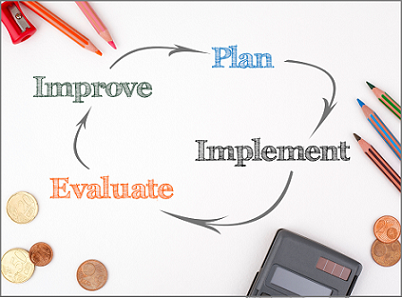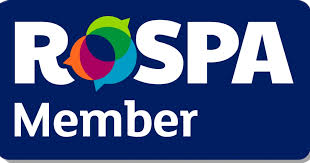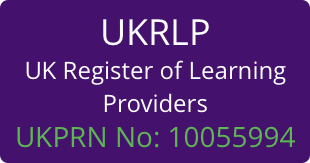
Evaluating e-learning, whether an online course or the digital elements of a blended training programme, involves assessing its effectiveness and impact. It helps determine if the learning objectives are being met, if the content is engaging and informative, and if learners are acquiring the necessary knowledge and skills. Here are some steps to evaluate e-learning and some possible reasons for a poor outcome:
- Assess the learning objectives
Are the learning objectives clearly outlining the desired outcomes and goals of the training. They should tell the learner what they will know, or be able to do, after completing the course? These objectives will serve as the basis for evaluation. - Define evaluation methods
Determine the most suitable evaluation methods based on your objectives to be able to evaluate the effectiveness of the learning. Common methods include assessments (quizzes, tests, assignments), surveys, observations, interviews, and feedback collection. Consider both quantitative (numerical) and qualitative (descriptive) approaches. - Assess learner engagement
Evaluate how engaged learners are with the e-learning content. This can be done by analysing completion rates, time spent on each module or activity, and participation in interactive elements such as discussions or simulations. High engagement suggests that learners find the material compelling and are actively involved. Low engagement suggests one or more issues such as:
- Poor instructional design
The content may be poorly organised, with unclear objectives and learning outcomes. It may lack coherence, making it difficult for learners to follow and understand the material. There may be lack of interactivity and engagement. Poor design may consist of static, text-heavy pages with minimal or no interactive components such as quizzes, simulations, or collaborative activities. This can lead to disengagement, reduced motivation, and limited retention of information. - Outdated or irrelevant content
The information provided may be inaccurate, obsolete, or not aligned with current best practices or industry standards. This can undermine the learners’ ability to acquire up-to-date knowledge and skills.
- Inaccessible design
Accessibility is a critical aspect of online learning.- Poorly designed e-learning may not consider accessibility requirements for learners with disabilities. It may lack features such as closed captions for videos, alternative text for images, or adjustable text sizes, making it difficult for some individuals to fully engage with the content.
- An e-learning platform or courses that are not mobile responsive can result in a frustrating learning experience for learners who expect seamless navigation and functionality on their mobile devices. Learners may seek alternative learning methods or platforms that offer better mobile compatibility. With the widespread use of smartphones and tablets, many learners rely heavily on mobile devices for accessing online content.
- Ineffective knowledge checks and assessments
Knowledge checks and assessments play a crucial role in evaluating learners’ understanding and progress. Poorly designed assessments or knowledge checks that do not accurately measure learners’ knowledge or skills, or provide adequate feedback, can reduce the value of the learning. - Technical issues
A poor e-learning experience often involves technical problems or limitations. These can include slow-loading pages, broken links, incompatible formats, or unreliable learning management systems (LMS). Technical difficulties can hinder the learning process and frustrate learners, impacting their overall experience. - Lack of instructor support or guidance
A lack of responsive instructors or limited opportunities for interaction and clarification can be disengaging for learners. They may feel isolated and unsupported, leading to a decreased learning experience.
- Poor instructional design
- Measure learning outcomes
Evaluate the extent to which learners have acquired the desired knowledge and skills. This can be done through formative assessments (quizzes or assignments during the course) and summative assessments (final exams or projects). Compare the results against the defined learning objectives to determine the effectiveness of the training. - Collect learner feedback
Obtain feedback from learners about their experience with the e-learning course. Reviews, surveys or questionnaires can be used to gather their opinions, suggestions, and overall satisfaction. This feedback can provide valuable insights into the strengths and areas for improvement of the training. - Analyse data and results
Once you have collected the evaluation data, analyse it to identify patterns, trends, and areas that require attention. Look for gaps between the learning objectives and the actual outcomes achieved. Consider both quantitative data (scores, completion rates) and qualitative data (learner feedback) to gain a comprehensive understanding. - Make improvements
Based on the analysis of the evaluation data, make necessary adjustments and improvements to enhance the training. This could involve revising the content, modifying assessments, improving learner engagement strategies, or addressing any identified issues or challenges. - Continuously monitor and iterate
Evaluation should be an ongoing process. Regularly monitor the e-learning programme or course and gather feedback to ensure it remains effective and aligned with learners’ needs. Implement iterative improvements based on feedback and evaluation results to enhance the overall quality of the e-learning experience.
Remember that evaluation is an iterative process aimed at continuously improving your training. By regularly assessing the effectiveness and making necessary adjustments, you can enhance the learning outcomes and ensure a successful e-learning experience for your learners.
You may be interested in the free eLM Blended Learning Quality Assurance Framework Toolkit, in which Section 2 provides a comprehensive list of online learning evaluation criteria.
Select the eLM Blended Learning Quality Assurance Framework Toolkit to view and download.







 UK: 0844 854 9218 | International: +44 (0)1488 580017
UK: 0844 854 9218 | International: +44 (0)1488 580017








